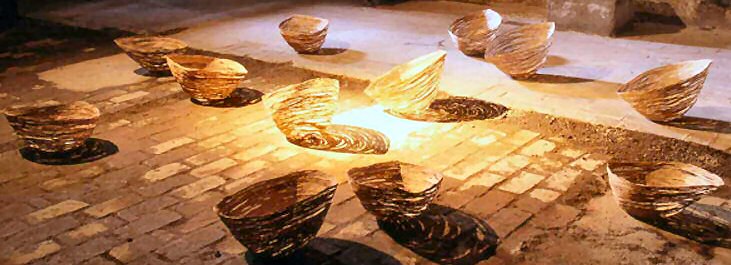




 |



 |
HPB 2006 Information |
Toshihiro Hattori Hattori uses washi, handmade traditional Japanese paper, for the construction of his three-dimensional objects. He makes the washi himself from kozo, fibres of the paper mulberry. His work is based on the delicate balance between nature and artificiality. Since 1999 he no longer uses kozo paper in his work, but the pure kozo fibre. Hattori is more and more inclined to show the fibre itself, instead of making shapes with it. The actual material is amongst other things shaped by the nature of the fibre, which can twist and shrink, and by the different tones that are the result of different methods for de-acidifying the kozo. In his most recent works he builds installations from a few simple pieces of paper or fibre. The installations are placed on the floor or hang on the wall.  Cradle (2001), 12-piece group. Materials: kozo (paper mulberry) and egg. |